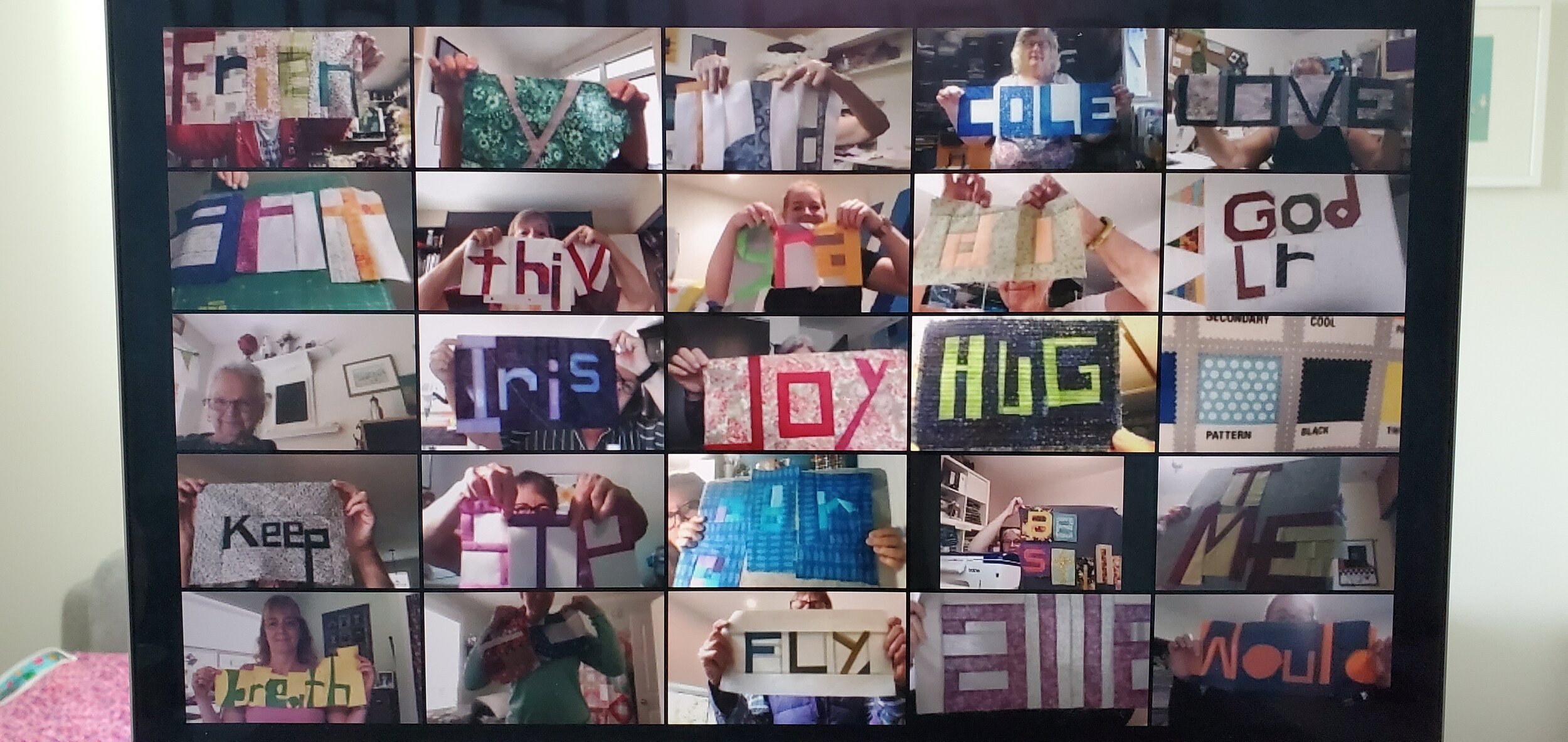Are you Zooming?
While I admit that I shunned Zoom, Skype, and most online meeting grounds in the spring and summer - I was just done with being online after schooling with my son and what little work I could get done - I have fully embraced online teaching. In fact, I am relishing the opportunities to be with guilds, stores, and students again. I am also highly respectful of groups choosing to meet this way over putting people at risk.
My corporate background is really coming out now - I can make a killer slide show! So maybe my graduate degree and 10 years in the energy sector weren't all for naught when I became a professional quilter? I do have 10 years of experience as a pro in this quilting community too. These sets of experiences combine to make me now and I appreciate it all.
In the past few months of teaching online I think I have learned and improved as well. I’ve also made some observations in my classes. Talking to other teachers has given me some additional insights. I will admit, that I haven’t taken any classes myself, so there is more learning to do. With all that, I’ve got some observations I want to share with you.
10 Observations from an Online Quilt Teacher (Teaching Live)
Just like in person, there are good teachers and there are not great teachers. Honestly, it might be the same on any given day. We’re all trying and for some, learning a new platform is not easy. You still have to keep your students engaged, perhaps even more so. You can’t just give everyone a task and then leave them be for an hour. This is an interactive experience. How that works exactly will be different for each teacher and each class.
Not all classes translate well to an online, live environment. You’ve got to examine flow, interactions with students, and how the time will be spent. For example, people sitting in silence sewing in their own space is kind of boring online.
Have either 2 cameras going or pre-record segments. When you want to do a demo of something specific it really helps to have a close up and/or overhead shot of the work. Being able to switch between these angles makes for a much better experience for the student.
Don’t force anyone to be on camera or talk. Keep the invitation open, but respect the wishes of people. Also. no one has to sew or participate if they don’t want to, their level of participation is up to them. This is the student’s advantage to taking the class on their own. They might just want to hang out or they have their reasons for not participating as you anticipated, it’s all good.
Take advantage of students being at home - get them to play with ALL their fabrics or supplies they may not have brought to class otherwise. Many students tell me they LOVE having access to all their stuff during a class so exploit that.
Own up to glitches and be quick to fix things as best as possible. We are not all IT gurus and things will go wrong. Take the time to learn the platform as best you can and work through anything that is going on. Your internet connectivity is up to you, the teacher. The student’s is up to them.
It’s hard to be running a live class AND manage the technical side of things. Using the guild or store’s account and having them manage entry and questions means you can concentrate on the classroom experience. If you are running your own event consider having an assistant or trusted friend managing the back end of stuff for you.
People seem to be MORE engaged at home. Honestly, I was shocked at this. I think I’m a pretty good teacher but even I doubted people’s interest in a 6 hour online class. But it works! The comfort of being at home and choosing your commitment to the class, not to mention access to all your stuff, is a huge advantage for students.
Recording classes delivered live is not okay, especially if it is done without the teacher’s permission. If we wanted to have a recorded class we would offer a stand alone one to buy.
Build in both breaks and chat time. For one, the teacher needs to go to the washroom if it is a long class. And secondly, by making them formal, students don’t feel they are sneaking out of class. At the same time, adding breaks in your active teaching so people can chat enhances their experience.
We are all hungry for connection. Guild meetings, hanging out at the store, taking classes together are all ways we quilters are used to connection. Switching to a solely online environment is new, difficult, and even scary for some. It’s one thing to be a chat or Facebook group, it is entirely different to be trying to learn and actually hang out together online. As a teacher I see my job as a facilitator of this connection, regardless of the class I am teaching. At the same time, I am privileged to be invited in to the shared space. It isn’t a responsibility I, or any teacher, should take lightly.
What about those of you who have taken classes? What would you add? What are some of the good and bad things you’ve seen in your own Zoom experience? How do you like Zoom compared to a prerecorded class? Add your thoughts to the comments section. We would all benefit from the shared experience.



